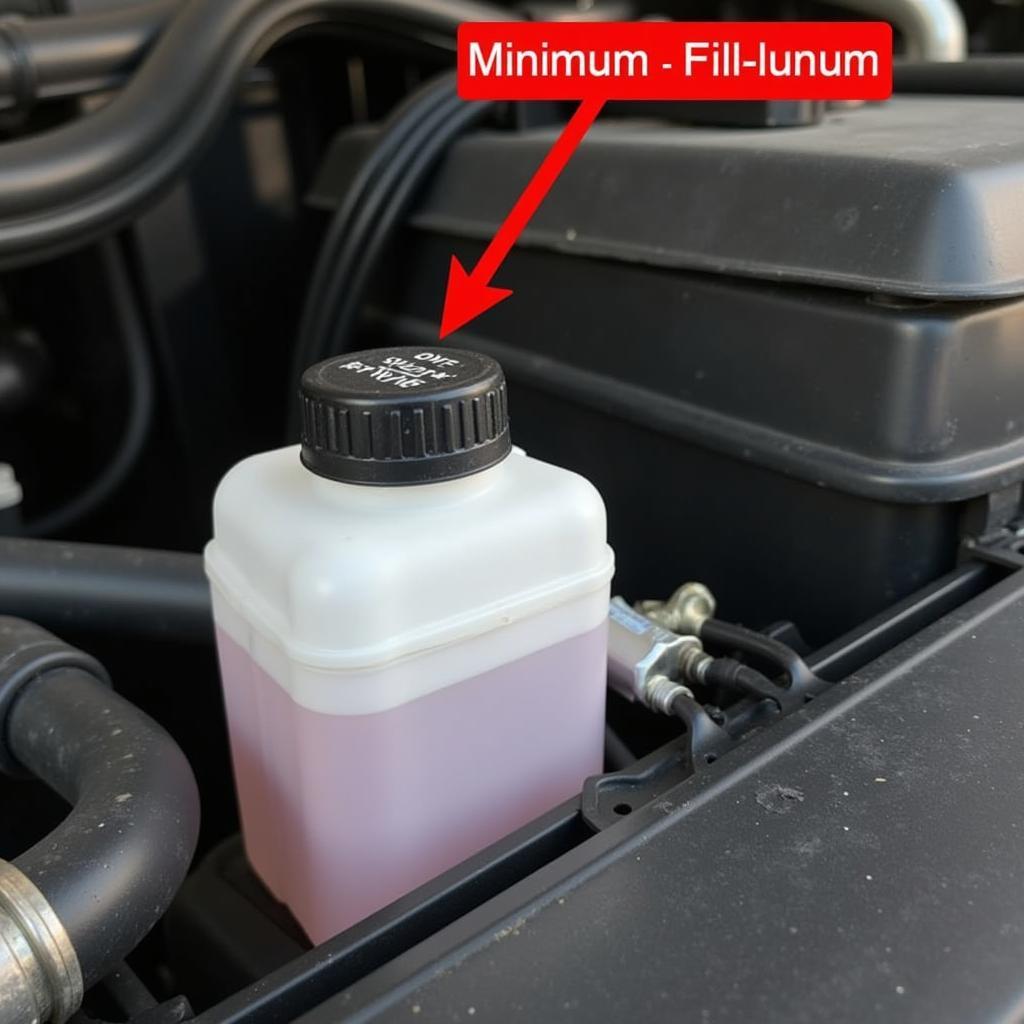The 2020 Honda Pilot is a popular SUV known for its reliability and safety features. However, like any vehicle, it can experience problems, and one common issue is the brake warning light coming on. This light can be alarming, but don’t panic! This article will guide you through understanding why your brake warning light might be on, how to troubleshoot the problem, and potential solutions.
Common Reasons for a Brake Warning Light in a 2020 Honda Pilot
The brake warning light serves as a vital indicator of potential issues with your braking system. When this light illuminates, it’s essential to address the problem promptly to ensure your safety and prevent further damage. Here are the most common reasons for a brake warning light in a 2020 Honda Pilot:
1. Low Brake Fluid Level
The brake warning light may turn on if the brake fluid level is low. Brake fluid is crucial for hydraulic pressure within the braking system. As the fluid level drops, the brake system’s performance is compromised.
Tip: Checking the brake fluid level is a quick and easy way to determine if this is the issue.
2. Worn Brake Pads or Rotors
Another common culprit for the brake warning light is worn brake pads or rotors. As your brake pads wear down, a sensor in the brake system triggers the warning light.
Tip: Listen for any squeaking or grinding noises while braking, which often indicates worn brake pads.
3. Faulty Brake System Sensors
The brake system is equipped with various sensors to monitor its performance. If a sensor malfunctions, it can send false signals to the vehicle’s computer, triggering the brake warning light.
4. Electronic Parking Brake Malfunction
The 2020 Honda Pilot features an electronic parking brake. If this system experiences an error, the brake warning light may come on.
5. ABS (Anti-lock Braking System) Issue
The ABS system is designed to prevent wheel lock-up during braking. If the ABS system encounters a malfunction, the brake warning light may illuminate.
How to Troubleshoot the Brake Warning Light
Here’s a step-by-step guide to help you diagnose and potentially resolve the problem:
- Check the Brake Fluid Level:
- Locate the brake fluid reservoir (usually under the hood).
- The reservoir has markings to indicate the proper fluid level.
- If the level is low, top it off with the recommended type of brake fluid.
- If the level is consistently low, you may have a leak in the brake system, requiring professional attention.
- Inspect the Brake Pads and Rotors:
- Use a flashlight to examine the brake pads through the wheel openings.
- Worn pads will have a thin layer of material remaining.
- If the brake pads are worn, you’ll need to have them replaced by a mechanic.
- Inspect the brake rotors for grooves, cracks, or excessive wear. If you notice any damage, they should be replaced or machined.
- Consult the Owner’s Manual:
- Your Honda Pilot’s owner’s manual provides detailed information about the brake warning light and troubleshooting steps.
- It may include codes or indicators that can help you further pinpoint the problem.
- Use an OBD-II Scanner:
- A basic OBD-II scanner can read error codes from your vehicle’s computer system.
- These codes can often provide clues about the specific issue causing the brake warning light.
- Seek Professional Assistance:
- If you’re unable to diagnose the problem or the brake warning light persists, it’s crucial to consult a certified mechanic.
- A professional can perform a thorough inspection, identify the root cause, and make necessary repairs.
Expert Insight:
“The brake warning light should never be ignored. It’s a crucial safety indicator. If you’re unsure about the issue, seeking professional advice from a qualified mechanic is always the safest approach.” – John Smith, Certified Automotive Technician
FAQs
1. Is it safe to drive with the brake warning light on?
- It’s not recommended. Driving with the brake warning light on can compromise braking performance and increase the risk of accidents.
2. How much does it cost to fix a brake warning light? - Repair costs can vary significantly depending on the underlying cause, the required parts, and labor costs.
3. Can I reset the brake warning light myself? - Sometimes, you can reset the brake warning light by disconnecting the battery for a few minutes, but this only addresses the warning light and doesn’t resolve the underlying issue.
4. What are the signs of a brake system leak? - A brake system leak can be identified by a low brake fluid level, a spongy brake pedal, or a squeaking or grinding sound during braking.
5. Is there a way to prevent brake problems? - Regular maintenance, such as brake fluid flushes, pad inspections, and rotor inspections, can help prevent brake problems.
Conclusion
The brake warning light in your 2020 Honda Pilot is a critical signal of a potential issue with your braking system. By understanding the common causes, troubleshooting steps, and seeking professional assistance when necessary, you can ensure your vehicle remains safe and reliable. Remember, prioritizing safety and proper maintenance is crucial for a smooth and worry-free driving experience.

